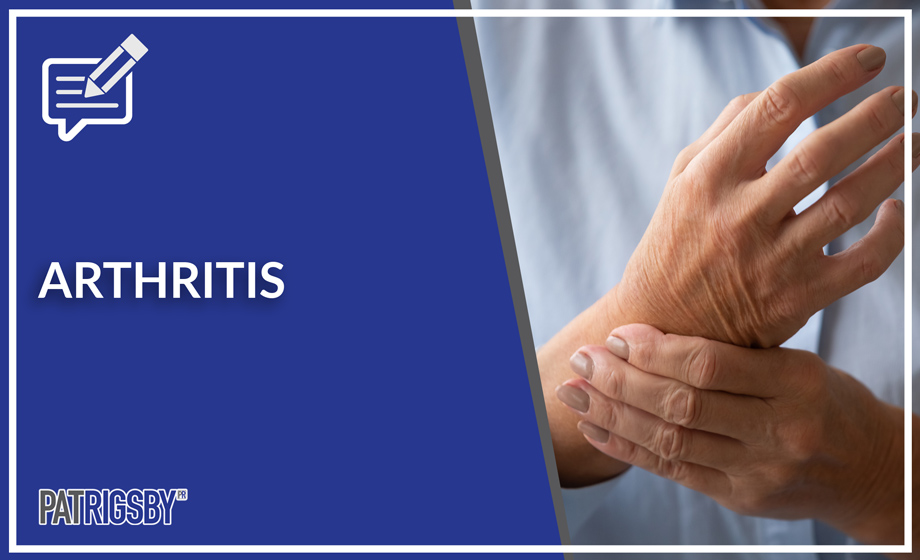By: Igor Klibanov, B.A. (Spec. Hons.), CTT, RTP
Meet Carole. She’s a 72-year-old client of ours, who works as a tour guide. Why did she start working with us? Her hip hurt. A lot. There was arthritis in both her hip, and knee (but to a lesser extent), and she didn’t like how it affected her.
- She was using a cane to get around
- She was using pain medications (2 Tylenols in the morning, every day)
- She was having a hard time going up and down the stairs
- She had trouble standing up after sitting for long periods of time
In the 5 months since she started working with us, she has made some very dramatic progress, and in this article, I’ll outline the exact approach that we used with her to get her to stop using pain medications completely, reduce her use of the cane, and be able to get around much easier.
But first, check out this video, to see Carole tell her story firsthand.
As a fitness professional, when a client with arthritis comes to you, the “obvious” thing to do is to “strengthen the muscles around the joint.” That’s not always the right thing to do, and in some cases, may do more damage than good. But more on that later.
Hopefully, by the end of this article, you’ll learn how to assess and write specific programs for your arthritic clients, so that they can feel better, move better, and refer their family, friends and coworkers to you.
What She’s Tried Before
Obviously, constant hip pain and knee pain isn’t pleasant, and doctor’s advice usually doesn’t help. “You’re just getting older. Learn to live with it.” Or “That’s common for somebody your age.” Makes you feel a lot better, doesn’t it? Thanks, doc.
Carole also tried doing physiotherapy, but didn’t find that to be beneficial. No changes in cane usage, or pain medications.
As I mention in other articles, if the root cause of pain is improper movement patterns, and improper mechanics, you can ice, take pain medications, use ultrasound, etc., none of these help with movement. They might offer symptomatic relief, but they don’t get to the root cause of the issue: bad movement. Fortunately, that’s where we, fitness professionals shine. Exercise can fix poor movement patterns (duh!).
The Assessment
Using an extensive movement assessment, Carole didn’t score so well in:
- The single leg stance test.
- Leg abduction strength
- Hip range of motion
And there were significant differences between her right side, and left side. The right side scored worse, which is where her arthritis is.
Although other tests were used as well, these were the 3 that really stood out, and pinpointed her trainer (who works for me) to the areas where there is the greatest potential for improvement.
It’s beyond the scope of this article to explain what these tests are, but let me explain what failing these tests means.
Single Leg Stance Test
Carole’s trainer was looking for two things here:
- How long she can hold for
- How is her alignment while she’s holding?
A single leg stance is not a test of strength. Rather, it’s a good insight into what her nervous system is telling her muscles to do. And that’s involuntary. This helps her trainer identify imbalances pretty easily.
If the hip is protruding out to the side, and the duration of the hold is short, it means that the stabilizer muscles around the hip aren’t doing the job of pulling the “ball” (that’s the head of the femure) into the “socket” (the acetabulum). This action of pulling the ball into the socket is called “centration.”
And if the ball isn’t in the socket, or at least not in there perfectly, every step you stake grinds away some cartilage, and once there’s no cartilage, it starts to grind away bone. And that’s when you get arthritis.
Leg Abduction Strength
This is a test that tells us how strong Carole’s abductors (including glutes, TFL, etc.) are. If those muscles are strong (relative to other muscles), that’s good. If they aren’t so strong, not good. If they are too strong, compared to other surrounding muscles, also not good.
In Carole’s case, those muscles were weak, especially on the right side.
Hip Range of Motion
The hip has many degrees of freedom. It’s one of the most flexible joints in the body. And to maintain good hip function, and pain-free movement, that range of motion needs to stay.
Carole’s trainer found limitations in her range of motion at the hip, and again, more so, on the right, than the left.
He had his work cut out for him.
What Exercises Were Used
Based on the results of Carole’s assessment, her trainer came up with an exercise program for her.
Because the hip muscles were particularly weak, her trainer had her doing monster band walks.
Other exercises used for this purpose were single leg abductions and single leg extensions. At first, this was done while holding on to something, so that balance isn’t an issue. Eventually, this progressed to doing the same thing, without holding on to anything.
After decent muscular balance was established, and those muscle started “firing” at the right times, he started to use more exercises that carry over better to the “real world” and activities of daily living.
So he started to incorporate deadlifts, single-leg deadlifts, sit-to-stand, and sit-to-stand with a band around the knees.
All these latter exercises helped Carole integrate her newly-found strength in “functional”, real-world exercises.
And that’s something that I want you to notice. The order of exercises. Notice that in the initial parts of Carole’s training, Nem was using isolation exercises, to get the muscles firing properly. But usually, that’s not enough. We don’t want something to look good in the gym, but it doesn’t carry over into life outside the gym. And if we had just done the first few exercises, traditional rehab exercises, it might have carried over to “real life”, and it might not have. That’s why in the second phase of Carole’s training, Nem started to incorporate movements that are actually used in real life, to get the best possible carry-over possible.
The Results
The results are nothing short of phenomenal.
In 5 months, Carole:
- Completely stopped using pain medications. She went from 2 per day, 7 days per week, to absolutely nothing!
- Reduced her use of the cane by A LOT. Before, she was using it all the time. Now, she only uses it if walking for longer than an hour, or if going up and down steep inclines. Other than that, she doesn’t use it.
- Couldn’t stand up out of a chair without pain. In her most recent workout, she did that 15 times, pain-free. Oh, and she was sitting down on to a lower chair in her most recent workout, showing better range of motion.
- Knee pain is down about 90%
- Improved her confidence
- Can enjoy her life more, since as a tour guide, she does a lot of walking
Hopefully this gave you, the fitness professional, some insight into how to design exercise programs for clients who have arthritis. Now go forth, and train people.
P.S. – 6-Weeks of Coaching…Free.
Get a surge of new clients and revenue over the next 6 Weeks with ZERO FEE and no obligation to continue?
If you’re a current business owner who wants to add 50K or more in annual revenue over the next 12 month, you can Test Drive our coaching program for 6 Weeks with no fee or even an obligation to continue as a way to demonstrate how we can help you grow your business.
No strings attached. No obligation. You get our best coaching & tools…and hopefully, you’ll love it enough that you want to keep working together.
Would you be interested in discussing?
If so, email me here with ‘interested’ in subject line and we’ll set up a chat.








